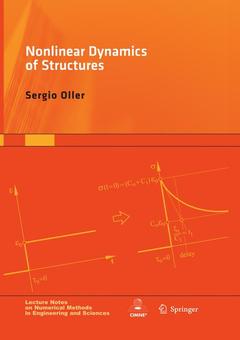Nonlinear Dynamics of Structures, Softcover reprint of the original 1st ed. 2015 Lecture Notes on Numerical Methods in Engineering and Sciences Series

This book lays the foundation of knowledge that will allow a better understanding of nonlinear phenomena that occur in structural dynamics.
This work is intended for graduate engineering students who want to expand their knowledge on the dynamic behavior of structures, specifically in the nonlinear field, by presenting the basis of dynamic balance in non?linear behavior structures due to the material and kinematics mechanical effects.
Particularly, this publication shows the solution of the equation of dynamic equilibrium for structure with nonlinear time?independent materials (plasticity, damage and frequencies evolution), as well as those time dependent non?linear behavior materials (viscoelasticity and viscoplasticity). The convergence conditions for the non?linear dynamic structure solution are studied and the theoretical concepts and its programming algorithms are presented.
Sergio Oller was appointed Full Professor at the School of Civil Engineering of the Technical University of Catalonia, Barcelona, Spain in 1988, and has worked there, as well as at the International Center for Numerical Methods in Engineering (CIMNE), up to the present.
He has also been Visiting Professor at the Civil Engineering Laboratory of the National University of Tucumán, Argentina, and at the Department of Civil and Environmental Engineering of the University of California at Berkeley, USA.
Oller teaches “Strength of Materials and Structures”, a course in Civil Engineering, Geologic Engineering and Aeronautical Engineering; “Fracture Mechanics”, a course in Numerical Methods in Engineering, and “Composite Materials” and “Non-linear Dynamics” courses in the Doctoral Program in Structural Engineering.
His research fields include: New Structural Materials, Industrial Casting Processes, Parallel Computing, Constitutive Models, Composites Materials, Fatigue, Earthquake Engineering and Dynamic of Structures.
His research fields include: New Structural Materials, Industrial Casting Processes, Parallel Computing, Constitutive Models, Composites Materials, Fatigue, Earthquake Engineering and Dynamic of Structures.Date de parution : 09-2016
Ouvrage de 192 p.
21x29.7 cm
Date de parution : 07-2014
Ouvrage de 192 p.
21x29.7 cm



